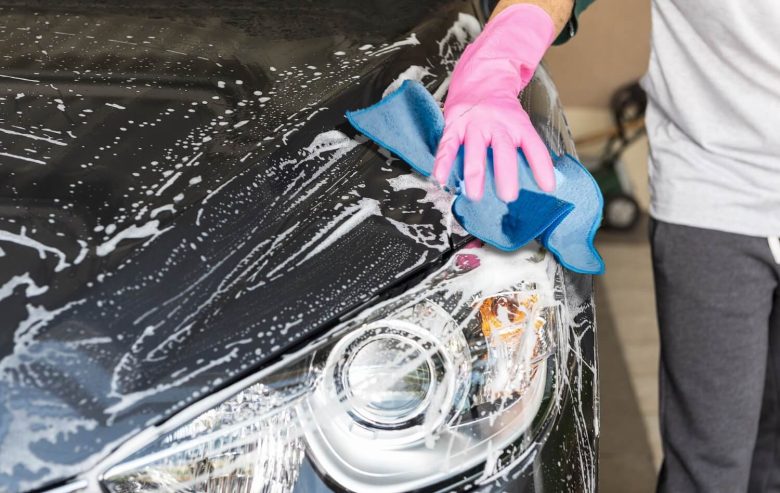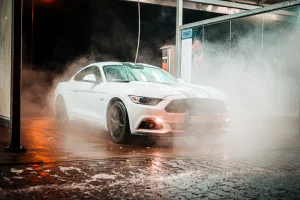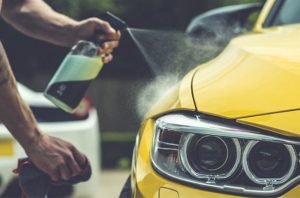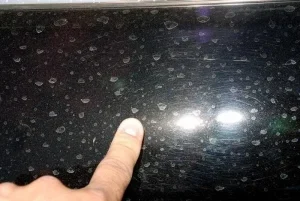As the first step, remove loose debris and dirt to minimize scratching risk.
Another key step is washing the car in sections from top to bottom. This ensures any contaminants rinsed away won’t reintroduced onto surfaces already cleansed by previous washes. Applying quality wax or sealants provides another layer of protection from environmental damage.
1. Use the Right Tools
Avoiding scratches begins with using appropriate cleaning tools, including microfiber towels, wash mitts and foam cannons. Furthermore, choosing an acid-neutral car wash soap that provides lubrication rather than harsh household detergents is also vital in order to prevent scratches from appearing on your vehicle’s finish.
Grit guards that fit securely into the bottom of your bucket are also an invaluable addition, preventing dirt from seeping into your soap and scratching up your paintwork while you work.
Typically, clear coat scratches don’t pose serious damage and can be repaired using rubbing compound. However, deeper scratches that affect initial layers of protection require professional intervention and may necessitate paint repair processes that include reapplying protective layers to your vehicle.
2. Pre-Rinse
Cleanliness is key when it comes to protecting your car from scratches. Dirt, road grime and bird droppings all contain tiny particles which can scratch paintwork when they come into contact with it.
Before beginning to wash your car, rinse it to loosen any dirt and debris clinging to its surface and prevent scratched paint later when washing begins. Doing this will also keep the wash process more manageable.
Tar and glue remover can also help eliminate stubborn contamination that won’t come off with water alone. Simply spray on some product, leave it sit for a few minutes, and rinse away when finished.
3. Two-Bucket Washing
The two bucket washing method is the safest way to hand wash your car and will minimize scratching or marring. The first bucket contains quality car wash solution mixed according to manufacturer instructions; and in the second, clean water fills one of two dunk buckets where you place your wash mitt or sponge after each panel has been cleaned; long pile microfiber mitts work great for upper panels while I prefer using chenille/noodle style mitts on heavily soiled lower sections.
Rinse the car carefully using a high pressure spray nozzle attached to your garden hose or low setting of a pressure washer, in order to effectively remove loose dirt and grit before washing begins, thus minimizing scratching during this process.
4. Use a Car Wash Soap
Utilizing high-grade car wash soap that produces a rich lather can provide essential lubrication to reduce scratching, especially if using two bucket washing or using a grit guard at the bottom of your bucket to capture dirt before it scratched your paintwork.
Quality car wash soap will also assist in breaking down and dissolving dirt particles, helping reduce scratching risks. In addition, it should provide effective stain removal and water spot resistance for an unblemished shine.
Regular waxing of your vehicle is one of the best ways to guard against scratching and other forms of paint damage, while repelling bird droppings and environmental contaminants that may erode its clear coat and eventually its base coat. A good coat of wax will also help deter bird droppings from damaging it further.
5. Adopt a Gentle Washing Technique
Water spots can wreak havoc on your car’s paint job, leaving unsightly streaks caused by minerals in hard water etching into its surface and scratching away at it. Preventative washing techniques combined with regular water spot removal treatments are recommended to keep your vehicle looking its best and looking like new.
Before washing a vehicle, always rinse thoroughly to remove dirt, debris, and grit from its surface. A high pressure rinse or hose with nozzle attachment are the ideal methods of doing this, along with using pH neutral or wrap safe soap, soft wash mitts, pH-neutral or wrap safe shampoo, soft sponge rinsing in separate bucket of clean water and frequent brush scrubbing can ensure best results. In order to maintain long term performance it’s also important to regularly rinsing sponges in clean water to prevent transfer onto painted surfaces!
6. Clean the Wheels
Cleaning your car regularly is one of the best ways to ward off scratches. Doing this protects its paint against environmental factors that erode it such as bird droppings, bug splatter and road debris that eat away at it over time.
Before beginning carwashing, make sure that you rinse your vehicle to remove loose dirt and grit from its body and help avoid scratching its paint as you wash. Doing this also prevents scratched paint surfaces during washing sessions.
Use the two-bucket method when washing your car to reduce scratching. Fill one bucket with soapy water, while another should contain clean water; place your sponge or wash mitt into this second one to rinse off any grit-filled particles before dipping back into the first bucket with soapy water – this reduces how long you’re rubbing against its body with your sponge-grit filled sponge!
7. Dry Your Car
Always have a towel ready when drying off your car after washing. These towels collect dirt and minerals from the water, so it is important to inspect them periodically for anything that could scratch your paint job. When it appears dirty, rinsing out and replacing with a new towel should do just the trick.
As well, it’s best to wash your car in the shade rather than under direct sunlight, as direct sun light hastens drying time and may leave behind spots and scratches on your vehicle. Remember to start at the top and work your way down; heavy dirt tends to collect at the bottom. Also be sure to thoroughly clean wheels regularly since this area often harbors brake dust or other contaminants.



